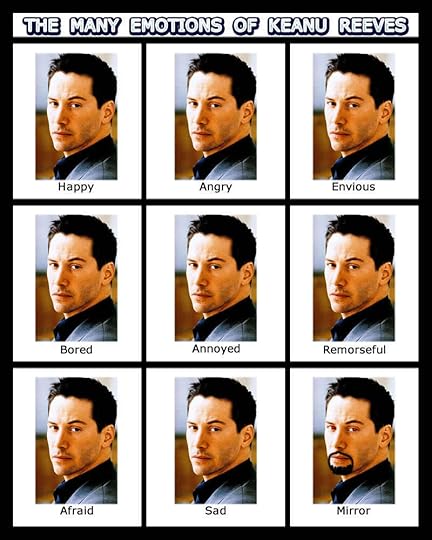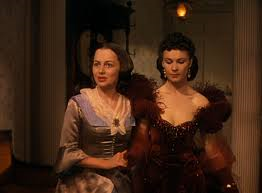Characters And Why You Should, You Know, Have Them
So my day has been taken up watching a delightfully bad movie and working some more on my proofreading, which is sucking my soul out of my ears. Seriously, my lovely proofreader, Vanessa, is a goddess for doing this and staying sane.
And as I was watching said bad movie – 47 Ronin for those of you playing at home – I began to think about all the things that could have made it better: plot, CGI that didn’t look like it came out of the mid-nineties, not shoehorning in a white guy as the lead, but especially character.
Now you might not know, but I am a GIGANTIC fan of The Mummy movies (first two – third one doesn’t exist), so I will give a movie a lot of leeway if it’s silly, fun, and I actually care about the characters. Say what you like about The Mummy (preferably not when I can hear you), but you have to admit that it wouldn’t have been half so fun if the characters weren’t so likeable. Sure, it was no Chekhov play, but who didn’t love following Rick, Evelyn, and Jonathan on their Indy-lite adventures?
And that’s where 47 Ronin not only failed, but set out its own seppuku mat. The characters were barely distinguishable from each other, and where they were they fell into broad stereotypes like The Mentor and the Madonna/Whore. They were introduced in one scene only to be given two lines and then killed off ten minutes later in a scene clearly meant to tug heartstrings. And this unmemorable group was led by Keanu ‘My Face is A Block of Wood’ Reeves, in a truly unfortunate casting decision.

Credit here
So in honour of 47 Ronin, I’ve decided to come up with a couple of tips when creating characters. I call it the ‘For the love of all that is good and holy, don’t do it that way’ school of teaching.
Characters And Why You Should, You Know, Have Them
1. Archetypes are Fine… As A Starting Point
The Hero’s Journey has underpinned far too many stories to mention. In it the Hero meets many people along his quest, both friend and foe: the Gatekeeper, the Mentor, the Dragon, the Goddess. And these archetypes are totally awesome… as long as you build on the characters from there. If your Mentor is an old bearded dude who could slot into half a dozen fantasy books, then you’ve got a problem. Instead of painting by the numbers, take this archetype and make it work for you. Perhaps your mentor isn’t old. Perhaps he isn’t teaching your Hero willingly. Perhaps she has her own agenda. I love that we eventually find out that Dumbledore, who originally fit the wise old mentor archetype to a t, has actually had his own plans this whole time, and isn’t above using Harry to achieve them.
2. Kill the Madonna/Whore Dichotomy With Fire

Why hello great example (and a great review of Gone With the Wind, too)
One of my most hated stereotypes, the Maddona/Whore Complex is, as TV Tropes defines it, “A pattern of thought that divides female-humanity into two mutually exclusive categories: Madonnas and Whores. The virtuous Madonna figure, possessing and protecting social virtue (and deploring sexuality) is an object of worship and everything that all females should aspire to be. However, sex is not part of this. Anyone who fails to live up to the Madonna standard is a Whore driven exclusively by sexual desire and (therefore) lacking in morality and humanity.
47 Ronin has a blatant example of this in its two main female characters: Mika and the Witch. Mika is the daughter of a lord, and has shared a chaste but fervent love with Kai since they were children. She is defined as a daughter and a wife (the bad guy wants to marry her), and it is partially this potential loss of honour at her marriage to Lord Kira that spurs the plot forward. Contrast her with the Witch, a character not even given her own name, but characterised by her obedience and love for Lord Kira, her shapeshifting abilities, and little else. Mika is always dressed perfectly, with fastidious hair; the Witch is a slovenly dresser with hair always in disarray. In one scene, the Witch invades Mika’s bedchamber, where she is trussed up under a blanket, and rubs herself over Mika. You don’t have to be Sigmund Freud to see what they were going for.
As a woman who also writes, I like to think that I write women well. I try to treat them like characters first and women second. I haven’t consciously made any decisions about what they should do or have happen to them based on ‘what a woman would do’. They do what Tuesday would do, or Hester would do. Their gender is secondary. Therefore when I see a story take female characters and give them few defining features other than broad gender stereotypes, well, it gets me a little hot under the collar.
For a more positive example from my contrasting Universal movie, The Mummy, Evelyn Carnahan is passionate, studious, naïve, clumsy… and she still manages to fulfil the Damsel in Distress archetype. So, as I was saying in my first point, archetypes can still work as long as you don’t build them into offensive stereotypes.
3. If You Want Your Death Scene To Get An Emotional Reaction, Introduce the Character Before the Death Scene

It never stops hurting…
I’m going to be spoiling a character death in the 47 Ronin, so if you haven’t seen it yet, stop reading right now.
….
Are you gone?
….
Don’t say I didn’t warn you…
Basho, the portly Japanese comic relief character, saves the Mentor and goes down in a blaze of arrows, finally apologising to our Hero and dying nobly. Sounds pretty affecting, right? Well, it would have been… if he hadn’t only spoken his first significant words about two scenes ago. (Coincidentally, this was the moment that I went, “Ohhhhh, so he’s supposed to be our Comic Relief”.) We barely had time to know him as an audience and so, although his being shot full of arrows was admittedly pretty badass, his death scene barely registered.
Pro-tip, y’all… if you want people to care when your characters die, you have to give us more to care about than two lines of dialogue. Build them up, let them breathe, give them space on the page. Then, when it’s finally time for them to die, you’ll forever after be getting hate notes from fans for killing them off.
Again, using The Mummy as an example of this genre of movie doing it right: Captain Winston Havlock. Introduced as an aging pilot interested in the old glory days of war and drowning his sorrows in drink, he perks up when he hears that he might die flying Rick, Ardeth, and Jonathan to rescue Evelyn. Nevertheless, when he does (predictably) die, who didn’t get even a little choked up at Rick saluting him as he disappeared into the quicksand?
4. Give Your Villain A Story, Or, Heck, Motivation
All I know about Lord Kira is that he wants to kill Lord Asano for… reasons? I’m assuming he wants power, because – stereotypical as this assumption might be – the movie doesn’t bother giving him a better reason. We know little about Lord Kira other than that he works with a witch, looks smashing in big shoulder pads, and can fight.
Done right, villains can (and do!) steal the show. Often the readers/viewers are given a glimpse into what makes the villain the way that they are and this allows us to, if not identify with them, at least understand where they’re coming from. For example, I’m a big fan of Orphan Black and, in the first season, Helena was treated as one of the main villains. But then, over the course of the series and definitely in Season 2, we see how horrifically she’s treated (even being locked inside a cage by her minder at one point) and how bad her childhood was and we come to see her as more than a One Note Villain. Give your villain a backstory and a reason for doing the things they do and you’ll be surprised at how interesting they can be. Remember, no one is evil in their own eyes.
Back to The Mummy, and the titular mummy, Imhotep, has a waaaay more developed story than Kira: he fell in love with the pharaoh’s mistress and wants to bring her back to life so that they can live together forever. Knowing that pretty much all he does is for love makes me a little sad at Imhotep’s inevitable defeat. Kira? Eh. Did not care a jot beyond the fact that know his kickass wardrobe will go unworn.
And that’s about it for now. As I’ve hopefully given you a glimpse of, it’s possible to learn things about the writing craft from even the most incompetent of movies. So go out and watch all the schlock you want under the guise of research. 
Let me know your favourite guilty pleasure by leaving a comment or writing to me at kabarkerwrites [at] gmail [dot] com.



